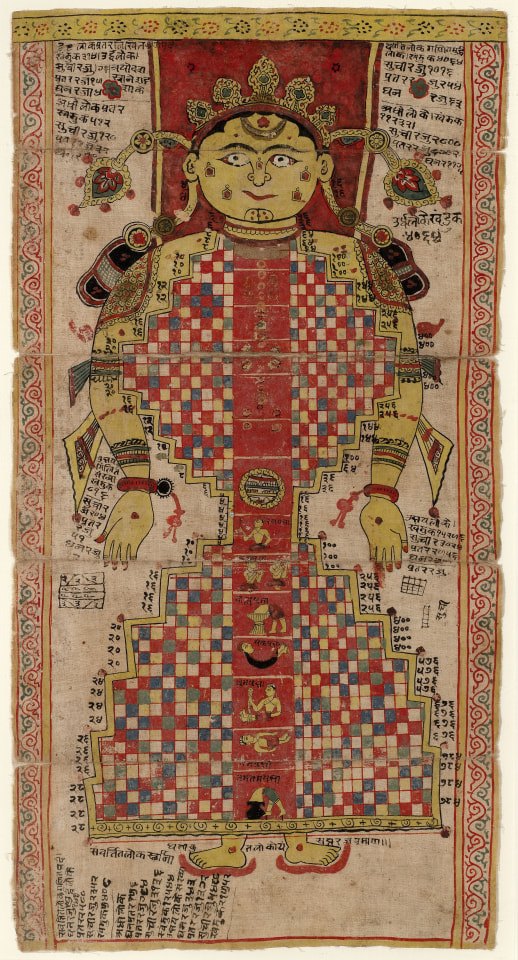North India
The universe within Jain cosmology is often presented in the form of a cosmic man or Lokapurusha. The current example would have probably once formed part of a Sangrahanisutra manuscript from North Western India. According to Jain cosmology the universe is divided into three basic realms. Lokapurushas depict the correlation between man and the universe by relating the cosmos to the proportions of the human figure. Divided into three parts, adholoka is represented from below the navel to the base; madhyaloka in the form of the jambudvipa is represented by a round disk at the waist; and urdhvaloka is depicted by the torso, neck and head. The heavens and hell are further subdivided into multiple levels represented by multicolored squares to indicate where different deities, demons, animals and humans live. The torso and head of the cosmic realm represent the heavenly realms, the legs represent seven levels of hell, where the inhabitants experience endless torment. In the middle, the disc seen at the waist represents the human realm where one can attain liberation from all levels of existence through correct religious observance.
